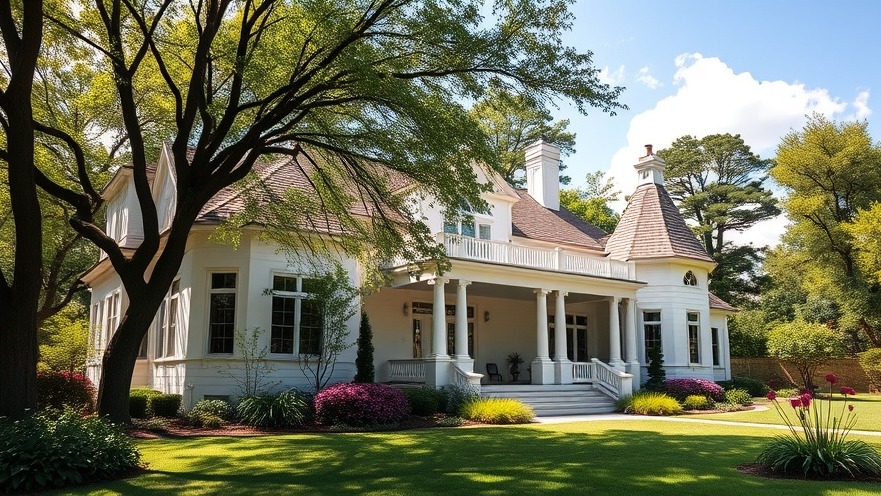
Exploring Sustainable Design in Memphis Gardens
The Memphis Fling garden tour reveals more than just beautiful blooms; it showcases remarkable architecture that reflects sustainable design principles. From the weathered stone façades of historic homes to contemporary gardens that harmonize with nature, the event is a testament to how architecture can complement eco-friendly gardening. While touring these stunning locations, one gardener embraced her eco-conscious values by showing off not only unique plant arrangements but also installations that promote water conservation and zero-waste practices.
Art Moderne Inspirations: The Kistler Garden
Take the Art Moderne home of Charles Kistler, designed by architect George Awsumb in 1949. Here, the curvy stone façade and a striking blue back door create a warm, inviting atmosphere. Beyond its aesthetic appeal, Kistler's garden serves practical purposes—featuring a pool with elegant spouting fountains that contribute to rainwater collection. Sculptures positioned around the space invite both admiration and ecological reflection, reminding visitors of the potential integration of art and nature in sustainable landscaping.
A Touch of Tradition: Italian Renaissance Influence
The Mills-Haynes House features an Italian Renaissance design that blends classic beauty with sustainability. Though rain drizzled during the tour, the elegant structure and its secret grotto encouraged exploration into how historical architecture can inspire modern eco-friendly practices. Surprisingly, the garden layout incorporates native plants, minimizing water use while generating beauty. By opting for drought-resistant species, the homeowners contribute to water conservation while preserving the site’s historical integrity.
Luxurious Mediterranean Revival Gardens
At the Armstrong-Clark House, the golden-hued Mediterranean Revival architecture frames a picturesque landscape. Elevated gardens with a pergola provide shelter to an array of carefully chosen plants that thrive in their environment. The design emphasizes sustainability through the use of species requiring less maintenance and water. As storm clouds gathered on the day of the tour, the warm glow from the terrace served as a reminder that sustainable home design does not sacrifice beauty; it enhances it.
Engaging Spaces: The Dixon Gallery & Gardens
The Dixon Gallery & Gardens exemplifies how gardens can complement art and architecture. The 17-acre space invites visitors to enjoy diverse plantings while also reflecting the commitment to sustainable practices. Paved paths and arbor tunnels create enchanting walkways that make exploring nature a delight. Such gardens not only elevate a home but also enhance our connection with the environment, demonstrating how careful landscaping choices can reduce chemical use and promote a toxin-free outdoor space.
Embracing Eco-Conscious Living
The blend of gorgeous architecture and thoughtful gardening during the Memphis Fling encourages us to consider how we can incorporate these eco-friendly principles into our own lives. Whether you're embarking on a complete garden redesign or simply looking for small changes to make your home more sustainable, embracing the essence of these gardens is a step toward living a more intentional, lower-impact lifestyle. From composting to using natural materials, every choice contributes to a healthier planet.
 Add Row
Add Row  Add
Add 




Write A Comment